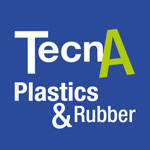 Investment, simulation, accuracy are the key features to give the market what it needs to advance
Investment, simulation, accuracy are the key features to give the market what it needs to advance
OR.P. Stampi developed in one of the main manufacturing districts of Northern Italy. With the constant expansion of the company, multiple locations, the production lines were reorganized and improved, guaranteeing precision in processing, advanced technology and deliveries to customers.
2023 is proceeding in the best possible way despite the European and global situation which, like the case of the automotive industry, affects us closely. New materials and new additives in the compounds change the behaviour of the elastomers inside the moulds. This means greater attention to the design and concept study of the mould. The design of the mould, aims to satisfy the precision of the moulded article and also at the life span of the mould, keeping in mind its balance and never taken to extremes. Last, but not least, is the study of heat dispersion in the plates, often the moulded technical articles need thermal stability, maintained throughout the moulding cycle. Again, the choice of steel, combined with the innovative systems applied to the individual plates, guarantees correct homogeneity throughout, benefitting the end customer.
OR.P. Stampi knows how much automotive means to those who mould rubber, large volumes and tight tolerances are the key issues. OR.P. Stampi realizes how things are changing, the electric motor and the hydrogen variant are once again modifying various cornerstones in the production of elastomeric items. Let’s start with the new regulations which, before starting to “be produced” cover entire desks for days on end, an important part that is almost as fundamental as the technical articles. Waiting times for approvals and tests are important, and the time to optimize or change things is always tight. As already mentioned, the study and design of the moulds are fundamental.
OR.P. Stampi’s investments in CAE, simulation is important, and OR.P. Stampi sees how useful they are to customers, along with continuous updates for its designers, new software, new materials and technologies to discover.
OR.P. Stampi notes with satisfaction that the “new automotive” also offers possibilities in the LSR field. The choice to take a step forward 10 years ago has been rewarded.
Since the beginning of this adventure, OR.P. Stampi has been aware of the complexity and accuracy with which the moulds must be made and designed, reaching the point of undermining and upsetting some theories and beliefs that differentiate it and make it so unique compared to the classic elastomers. The creation of an LSR mould starts first of all, from a careful analysis of the process that includes materials, automations, cycles, press capacity and customer experience level. From this basic information begins the study of the article, its dynamics and geometric characteristics. Only once a complete simulation of the process has been established and implemented, does the true start phase begin.
The strength of OR.P. Stampi and the accuracy with which it selects its investments having always tried to differentiate itself from the local market, create support for production, machinery developed with important manufacturers, dialogue and report imperfections, tolerances and possible risks. This does not remove the need for complete supervision by expert operators for ever advanced and more performing machinery and tools. Therefore, in the case of the LSR, the mould begins to shape with manufacturing certainty, aiming directly at the consequent result, i.e. the start-up phase in the press.
The use of the new Cold Runner Blocks (Needle Gate Valve system) dedicated to LSR, and the collaboration with strategic partners, make OR.P. Stampi new customers satisfied and proactive towards these new collaborations. For this reason, the internal tests OR.P. Stampi carries out with them remain fundamental. A way to get to know each other better and work together on the behaviour of Liquid Silicone and OR.P. Stampi moulds.






